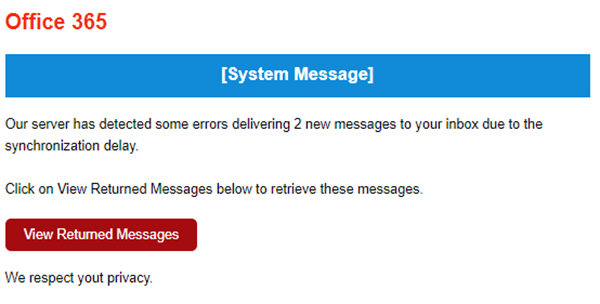October is Cybersecurity Awareness Month, and ITS is going to be rolling out a testing for students using Microsoft’s Attack Simulation Training.
Phishing has existed in attackers’ toolboxes for decades, with threat actors posing as trusted contacts and then targeting unsuspecting victims through email or text messages to steal sensitive data. While malicious actors always attempt to craft legitimate-looking phishing communications, some cybercriminals excel at this more than others. Historically, phishing communications have often been easy to spot because of careless drafting, with a lot of spelling errors and incorrect grammar.
However, simply advising people to look for “traditional” attributes of phishing is no longer enough to keep organizations safe. Beyond investing in the right technologies, such as enabling spam filters and implementing multi-factor authentication, education can make or break efforts to safeguard organizations from phishing and ransomware.
Below is an email that you will be getting on Wednesday October 18th at about 10:00am. It is from what appears to be a mail server advising you of two messages that could not be delivered because of the synchronization delay, and it wants you to click on the “View Returned Messages” to get them.

Notice who the email is coming from—it is coming from effecturellc Portal dUScj@effecturellc.com. This is not a legitimate Microsoft email.
When you receive this email, report it as attempted phishing. If you click on the “Report” button, then you can select the “Report phishing” tab. This will allow you to report this email to Microsoft for review and they will be able to block future emails from getting into our system. It will also delete the email for you, so you do not have to do anything further with it.
You can read more at Report Phishing Button in Outlook (For Students Only). You are an essential part of keeping Drake safe and secure.
Check out this week’s Cybersecurity Awareness Month topic in OnCampus. Learn more about cybersecurity, watch videos, and become a part of Drake’s security culture at drake.edu/its/csam and take the cybersecurity quiz to win prizes.
For ITS assistance, submit a ticket at service.drake.edu/its, visit the lower level of Carnegie Hall, or call 515-271-3001.
— Jeremy Calvert, ITS
